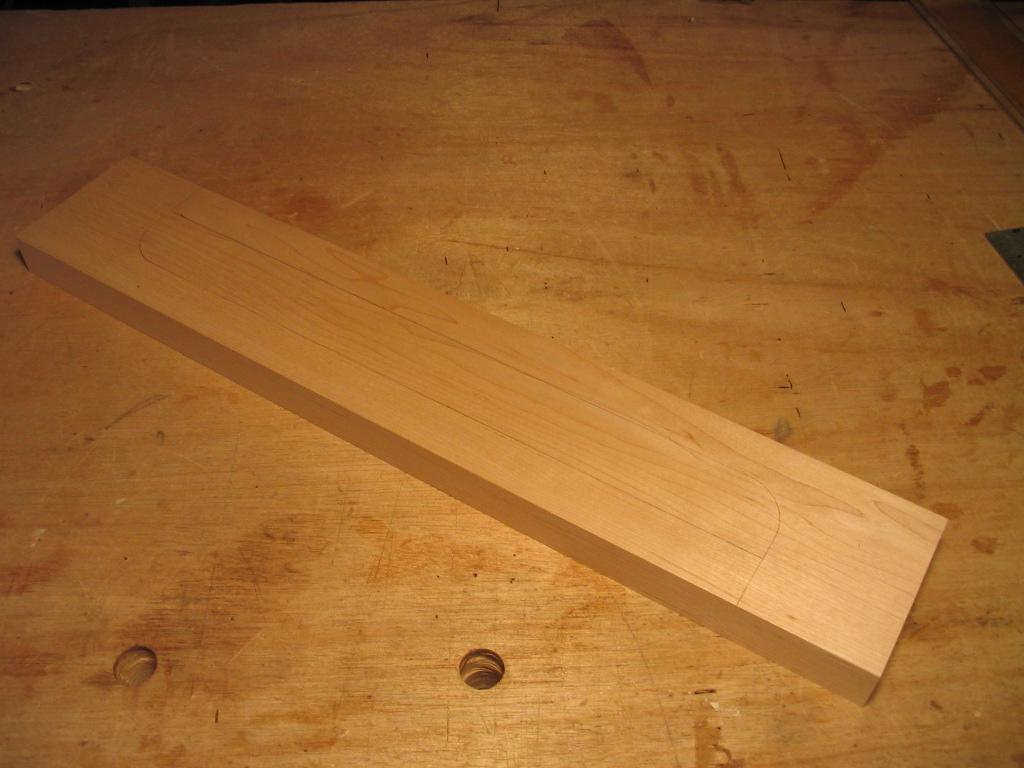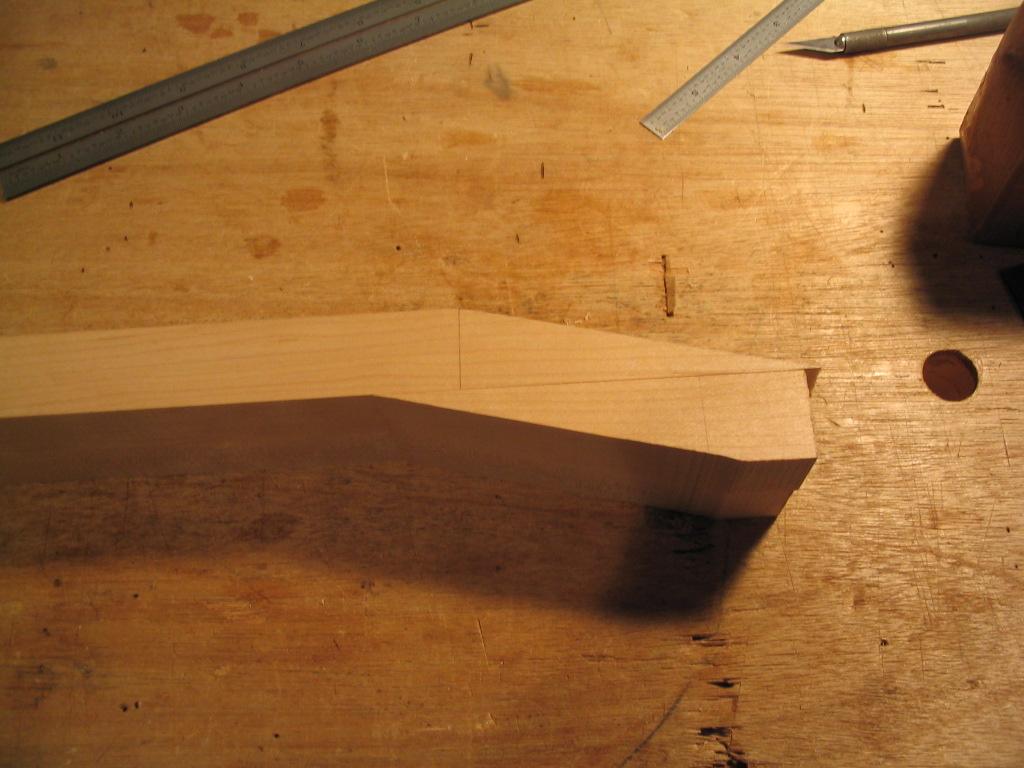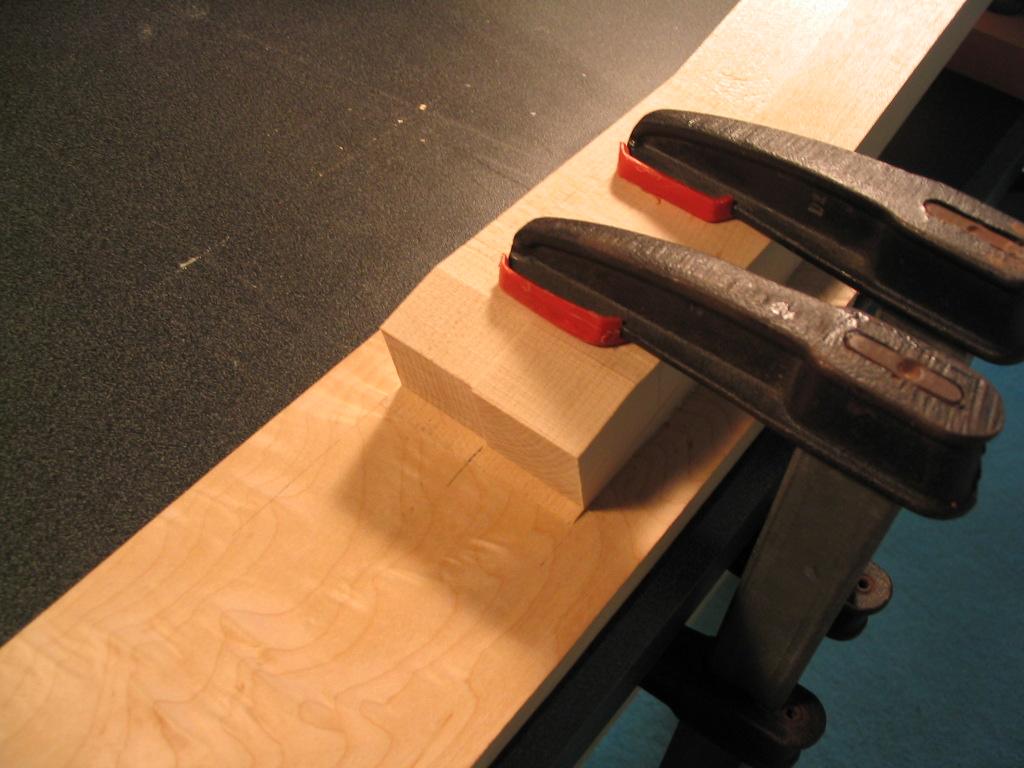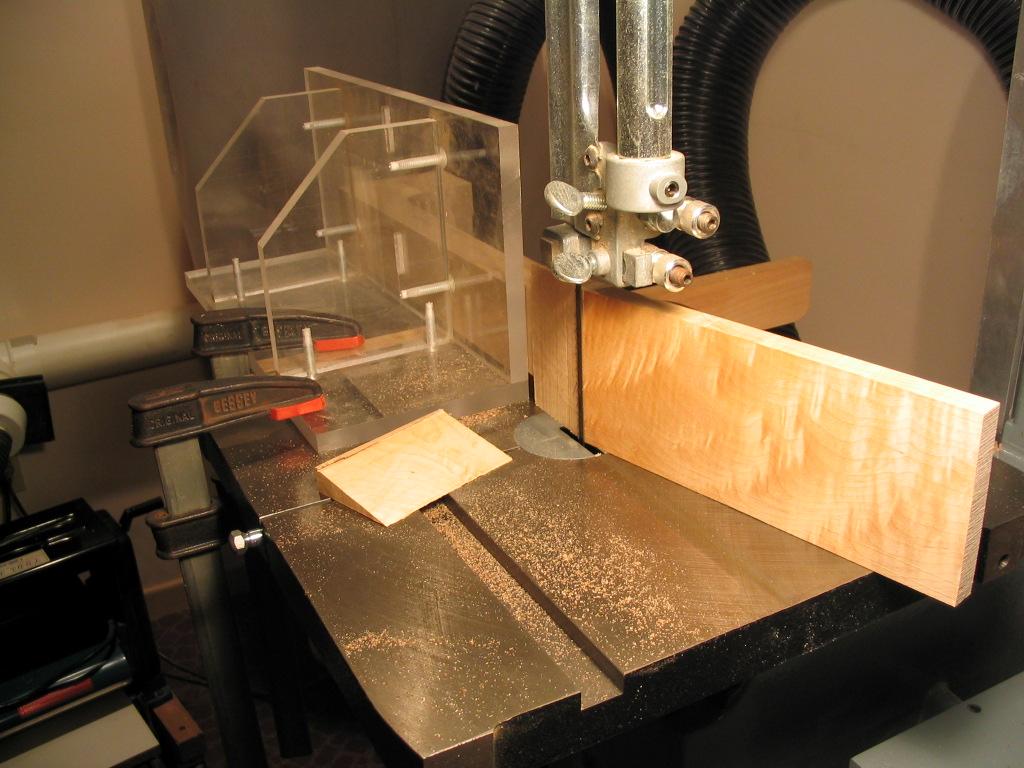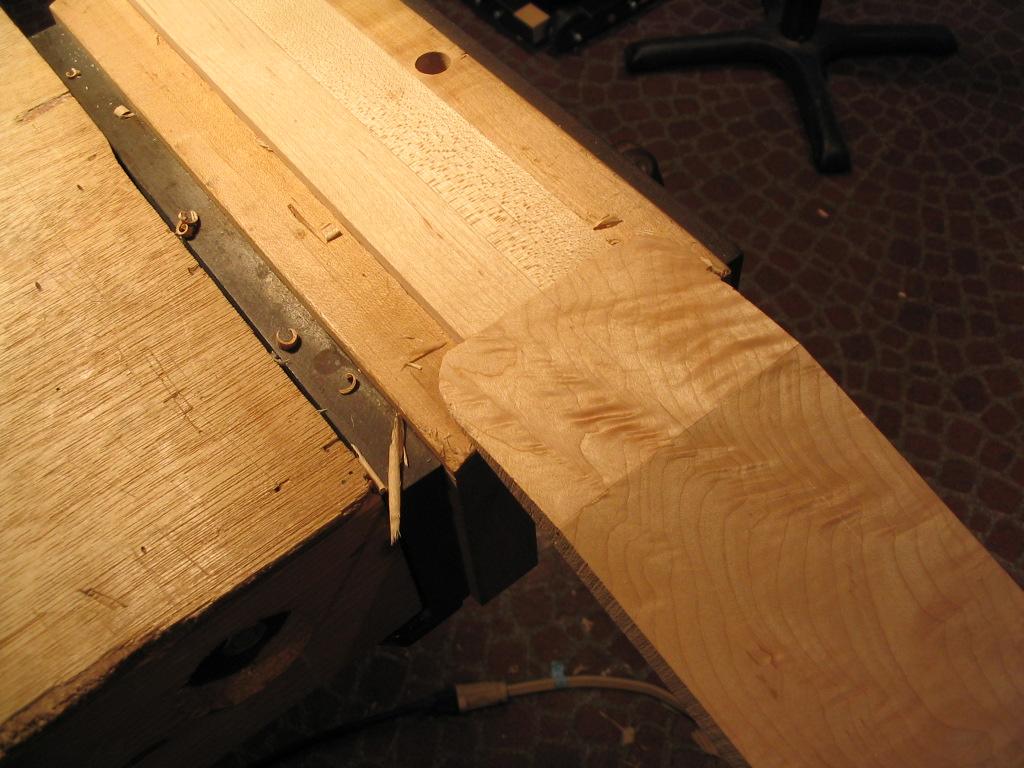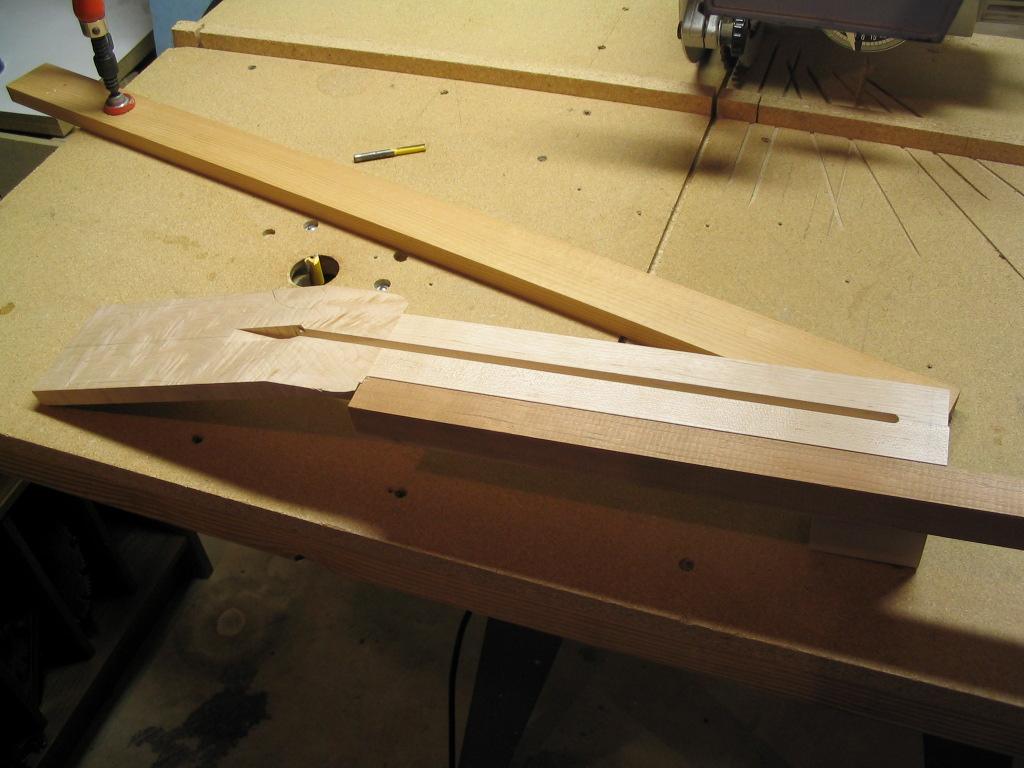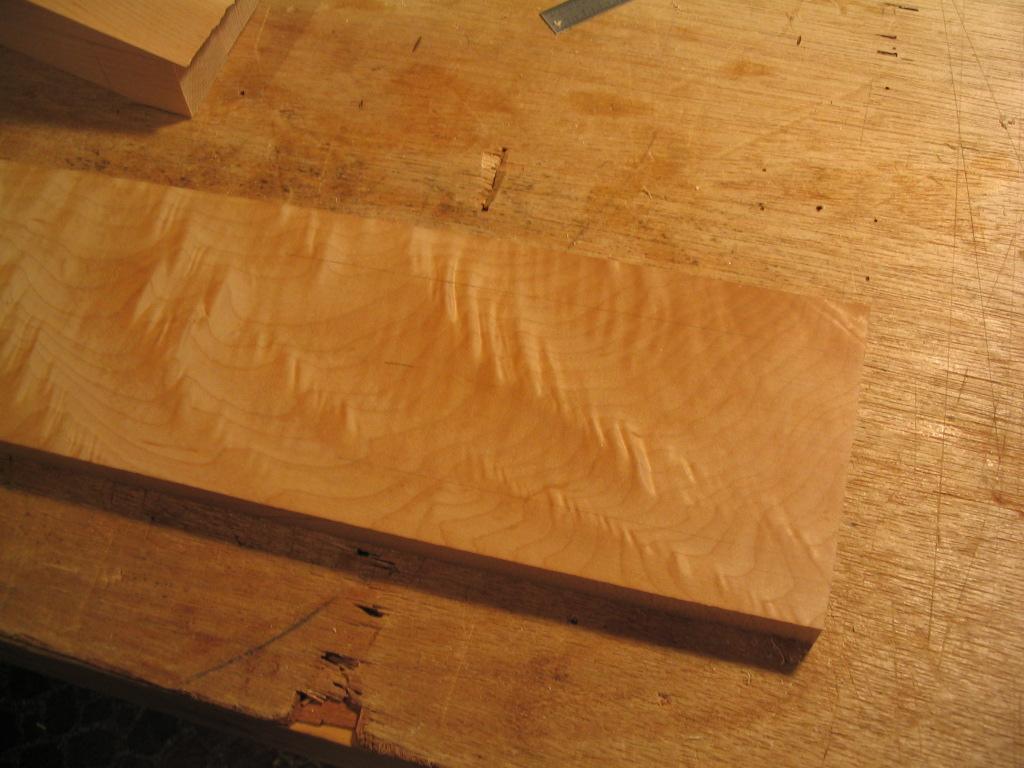
The peghead is then glued to the neck
stock - or rather, as the pictures show, the neck stock is glued to the
peghead. Notice the block taped to the neck stock for the clamping
caul, so the clamping surface will be parallel to the headstock surface.

Once the peghead is glued, the portion
of it that protrudes above the top surface of the neck needs to be cut
off. The cut is made on the bandsaw, with the top surface of the neck
moving against the plexiglss jig shown.



